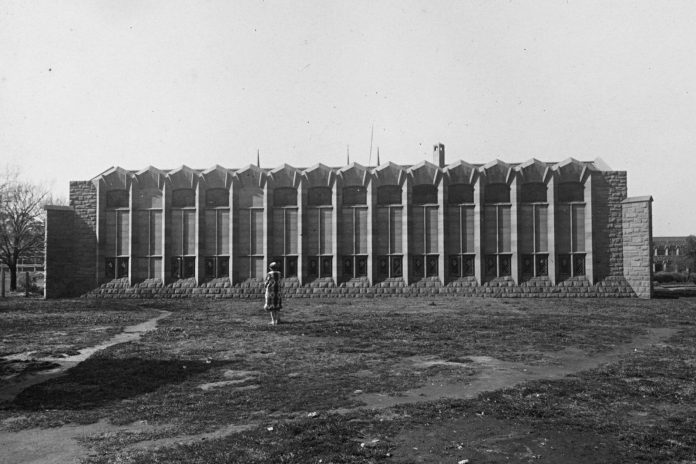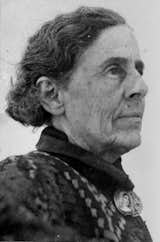Welcome to Origin Story, a series that chronicles the lesser-known histories of designs that have shaped how we live.
Though Frank Lloyd Wright is arguably America’s most famous architect, what often goes unmentioned in narratives about his influence is the impact of a woman named Marion Mahony on much of his earliest work. Mahony was one of the first licensed female architects in the United States and Wright’s first employee. Her designs and renderings helped create the Prairie School style, which propelled Wright’s career into the international spotlight. Though she was underrecognized during her lifetime, a closer look at Mahony’s career and starting role as FLW’s design collaborator reveals an architectural force to be reckoned with.
Early Blueprints
Born in Chicago in 1871, months before the Great Chicago Fire, Marion Mahony spent much of her formative years witnessing the city’s reinvention through development. Raised largely by her mother, aunt, and grandmother (her mother was a prominent school principal who socialized with suffragists), Mahony pursued architecture even though, at the time, women were almost entirely excluded from the profession. In 1894, Mahony became the second woman to receive an architecture degree from MIT and returned to Chicago to work as a draftsperson for her cousin, architect Dwight H. Perkins. The next year, after they were introduced by Perkins, Wright hired Mahony at his burgeoning practice, which eventually became his Oak Park, Illinois, studio. The decision was groundbreaking for the era, though the pair had much in common—both were Unitarians and found inspiration in the work of architect Louis Sullivan. In 1898, Mahony became the first woman in Illinois to secure her architecture license.
A Fruitful Pairing
Wright entrusted Mahony with drafting plans for buildings, furniture, and landscapes, essentially regarding her as his chief designer. Mahony’s skillful renderings for early-1900s projects like the DeRhodes House in Indiana and Oak Park’s Unity Temple—one of Wright’s most celebrated buildings—were a key part of establishing the Prairie School movement. She also produced much of the artwork for Wright’s 1910 Wasmuth Portfolio, a lavish publication that introduced his designs to Europe and cemented his global reputation. Mahony’s name was left off many of her distinctive, Japanese-influenced drawings, since that honor usually went exclusively to the lead architect (though she did hide her monogram among the foliage in her DeRhodes House rendering), but historians today recognize her as a significant contributor to Wright’s aesthetic.
Around the World
Mahony’s collaborative relationship with the volatile Wright eventually soured, and in 1911, Mahony married architect Walter Burley Griffin, and they started their own practice. About a year in, the couple entered a competition to design Australia’s new capital. Their design won, and they moved to Australia, where Mahony (now Mahony Griffin) played a central role in executing projects that blended ideas about urban planning with expressive architectural forms and reverence for natural landscapes. In the 1930s, the pair designed several projects in India (including an unbuilt library and museum for the raja of Mahmudabad) that reflected Prairie School ideals. While Mahony Griffin still faced the era’s extreme sexism, her husband was supportive, telling a reporter that he was the businessman to her genius.
Reflection and Reevaluation
By the 1940s, after her husband’s death, Mahony Griffin returned to Chicago and wrote The Magic of America, a 1,400-page memoir that chronicles her philosophy, work, and strained relationship with Wright. The unpublished manuscript has become a vital source for historians eager to reevaluate her crucial role in Wright’s career and the development and expansion of the Prairie School. Renowned 20th-century architectural critic Reyner Banham once reportedly described her as both the “greatest architectural delineator of her generation” and “America’s (and perhaps the world’s) first woman architect who needed no apology in a world of men.”
Top photo of Marion Mahony Griffin in front of Newman College, Melbourne University, in 1916, courtesy National Library of Australia.













